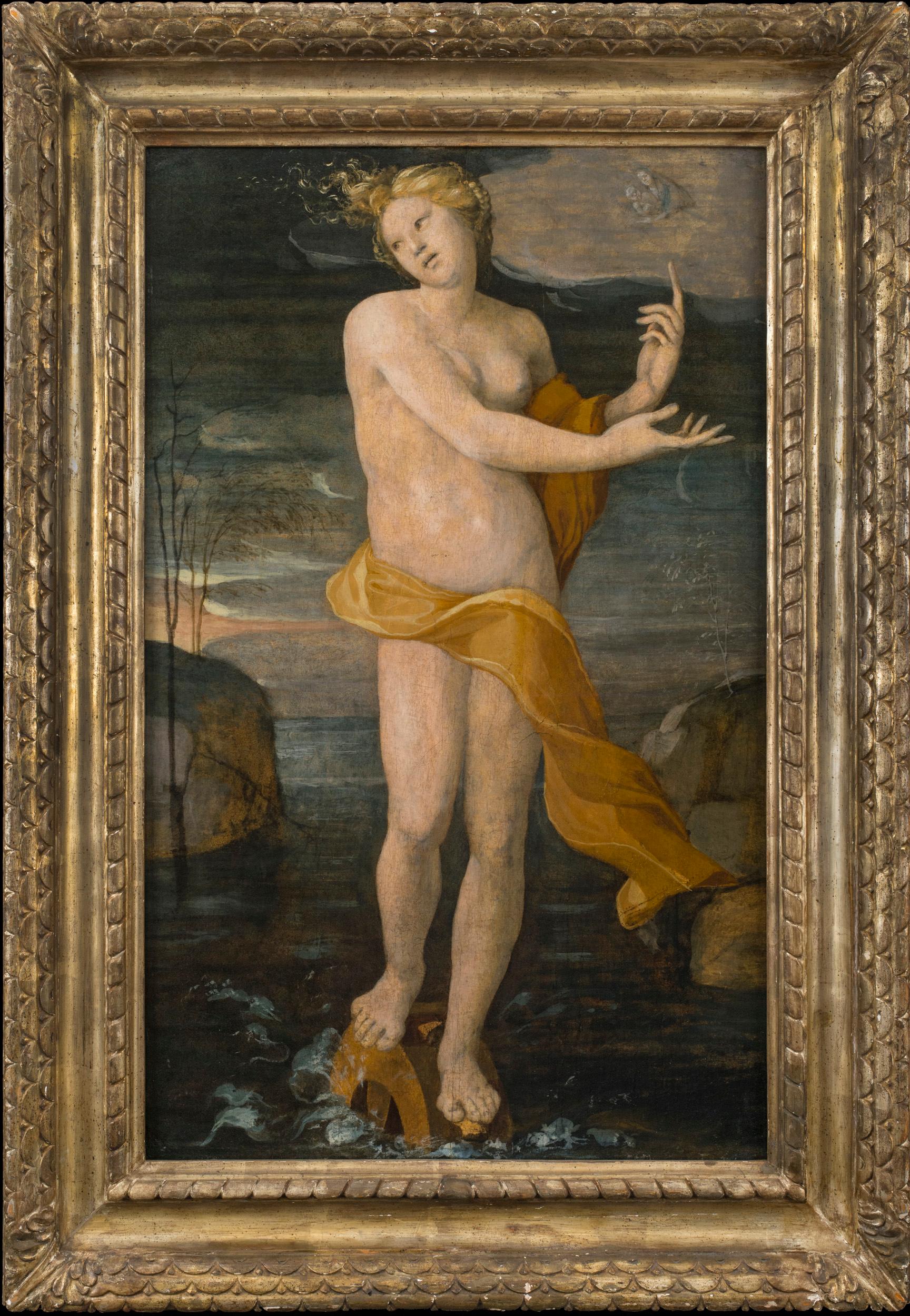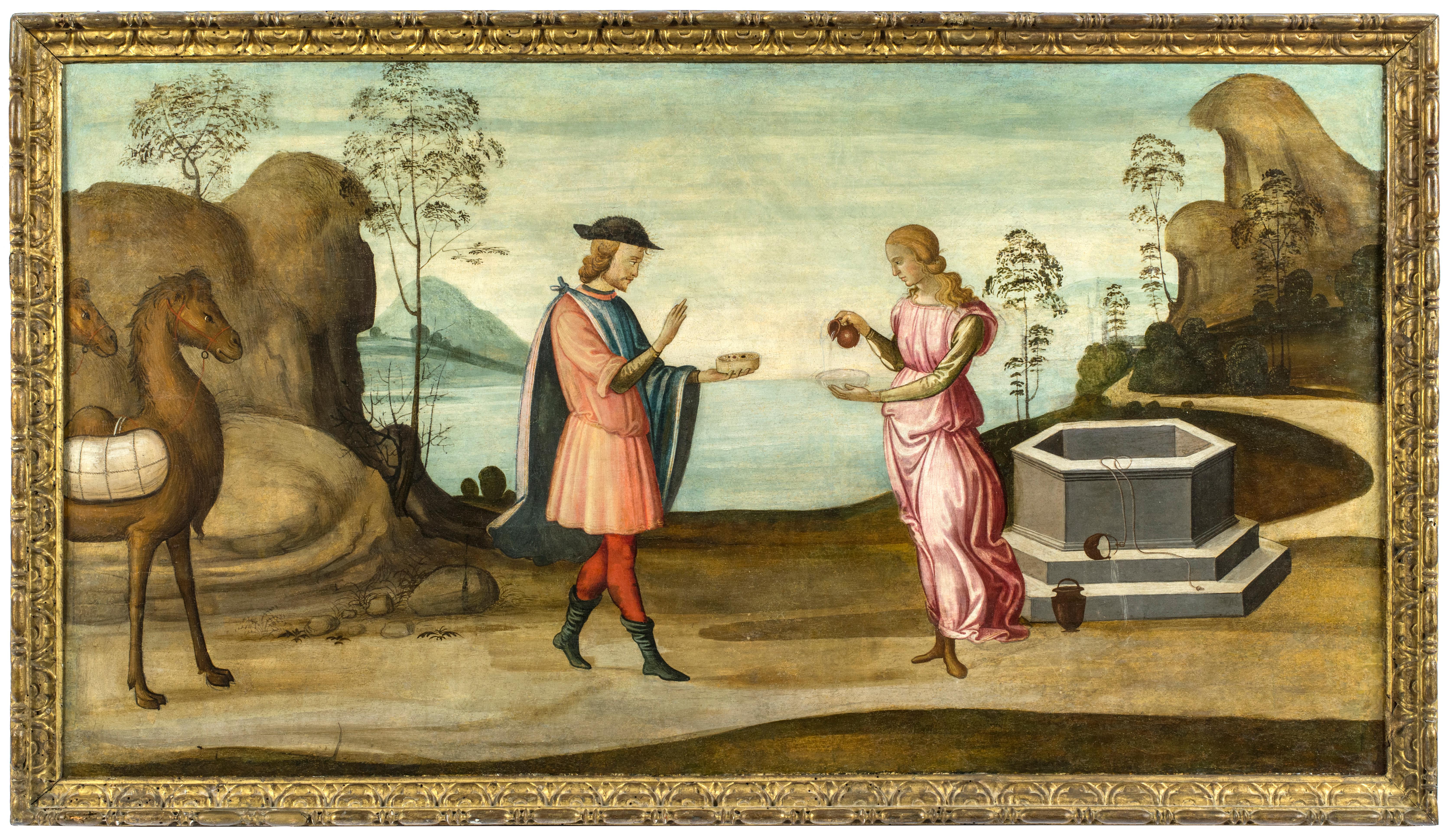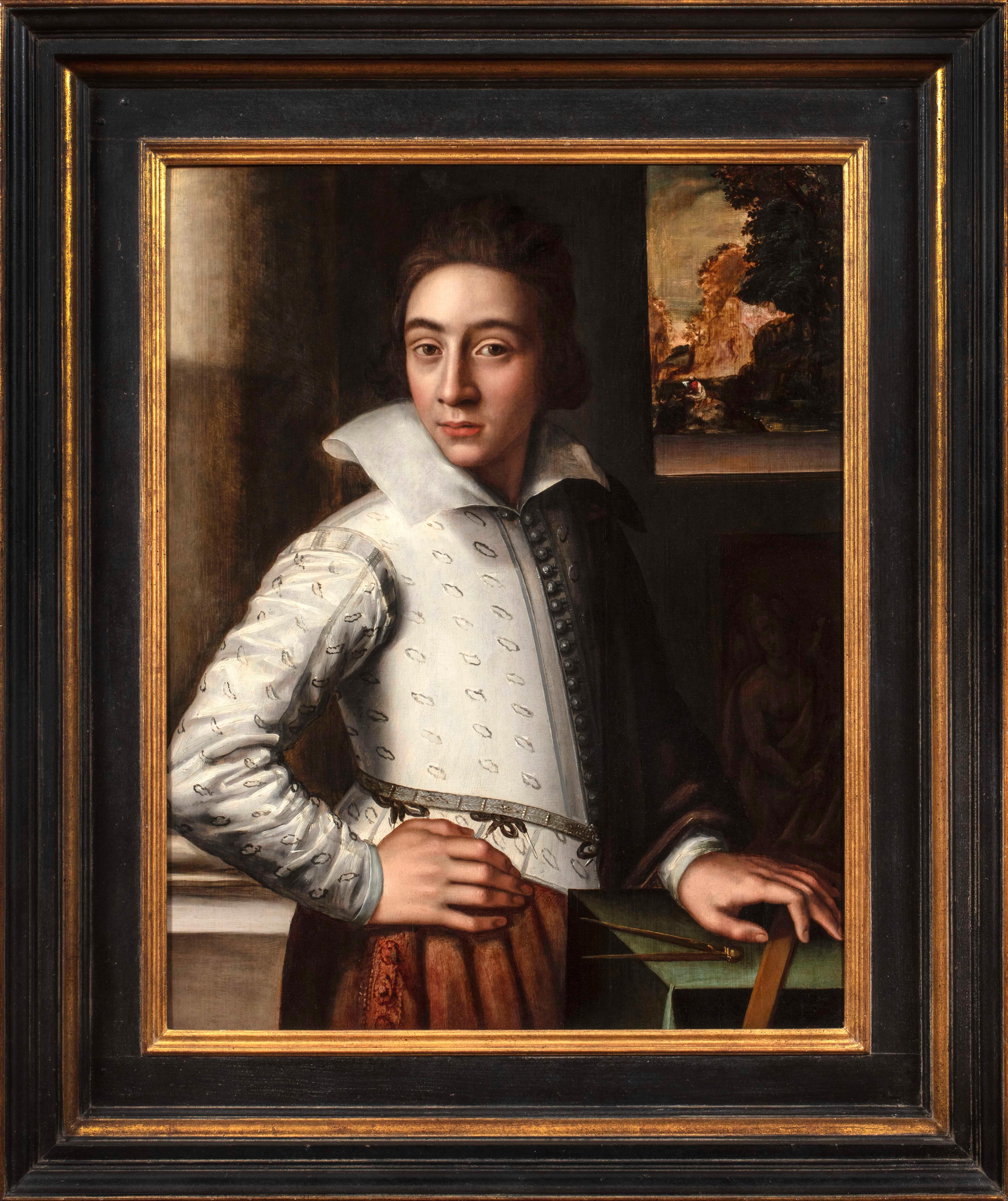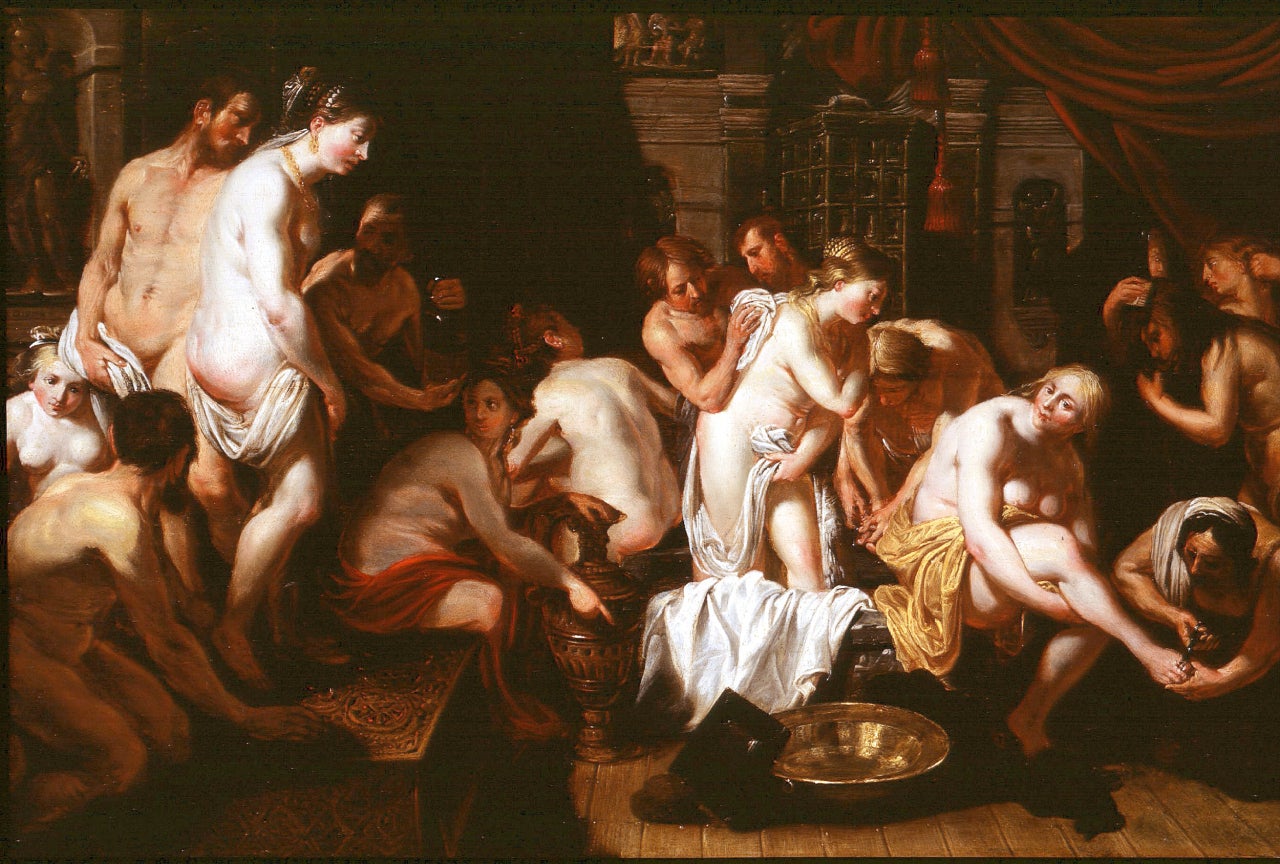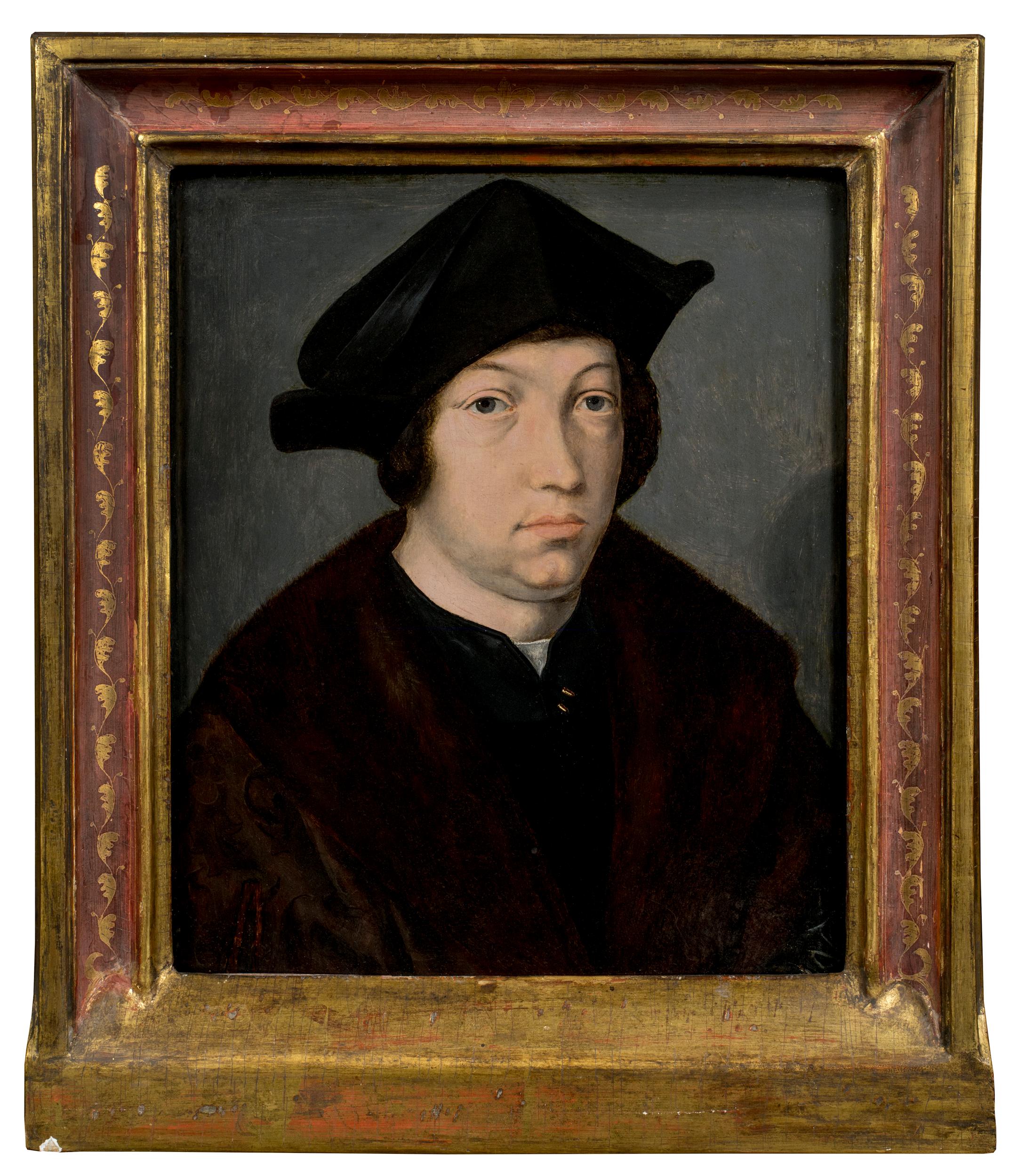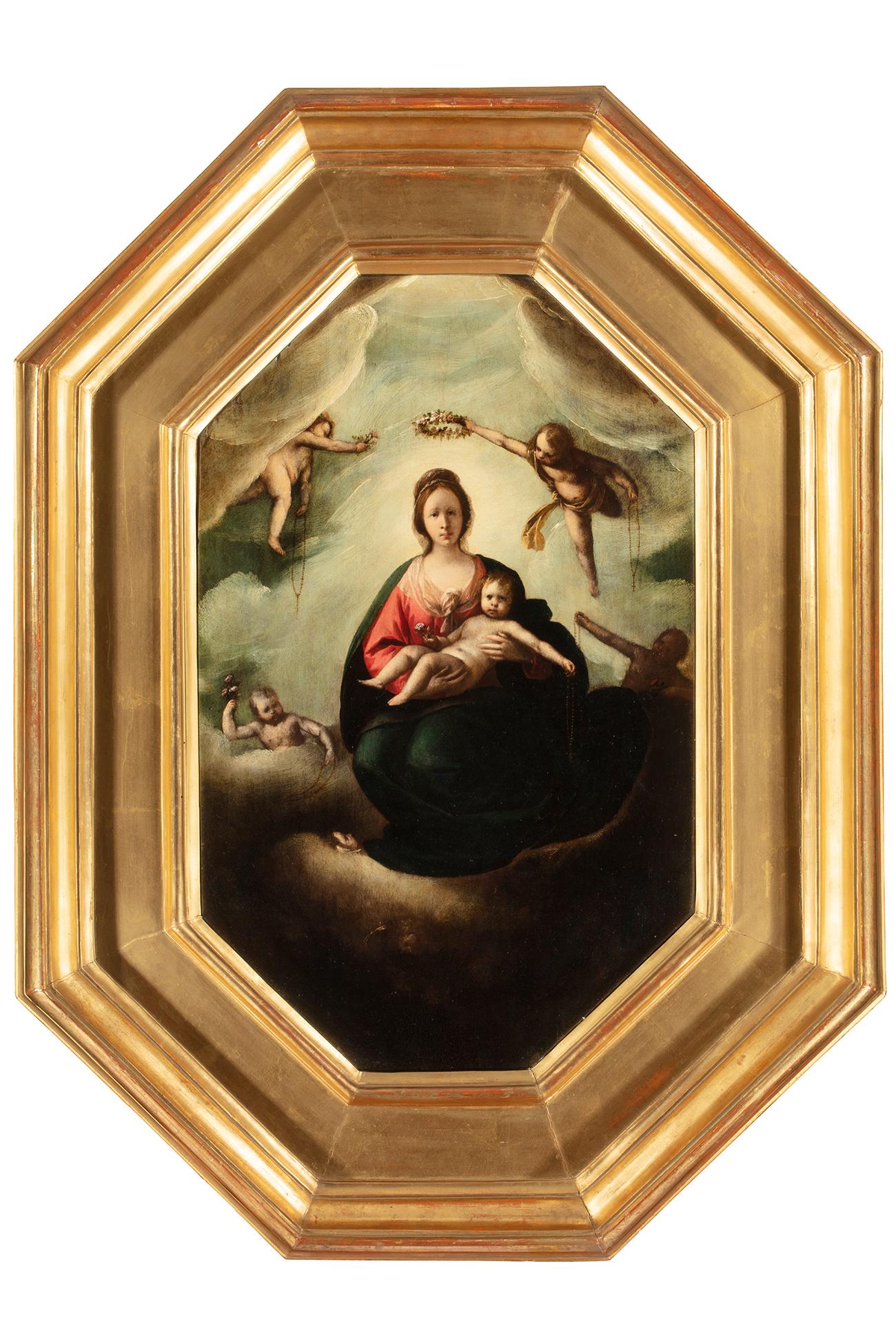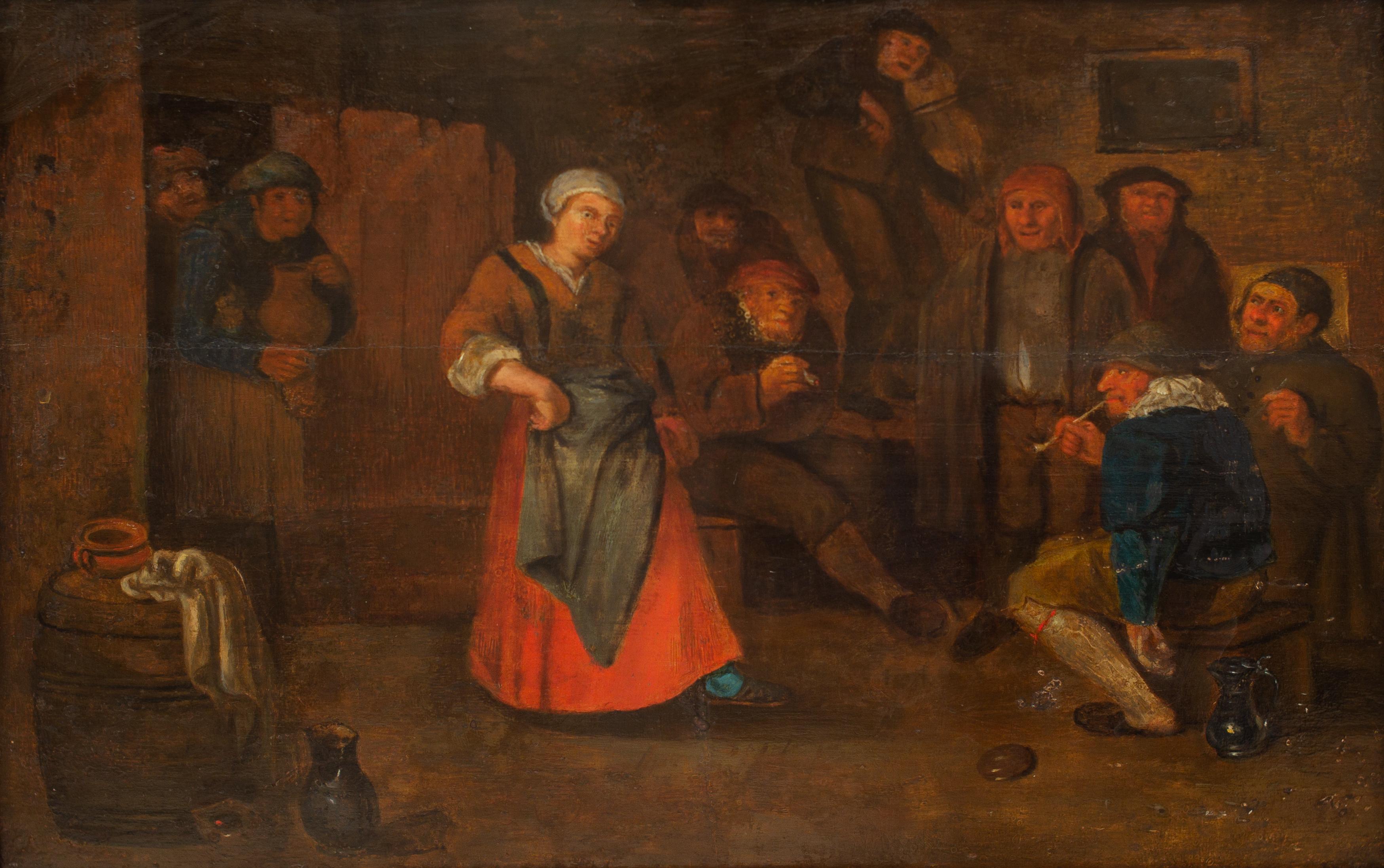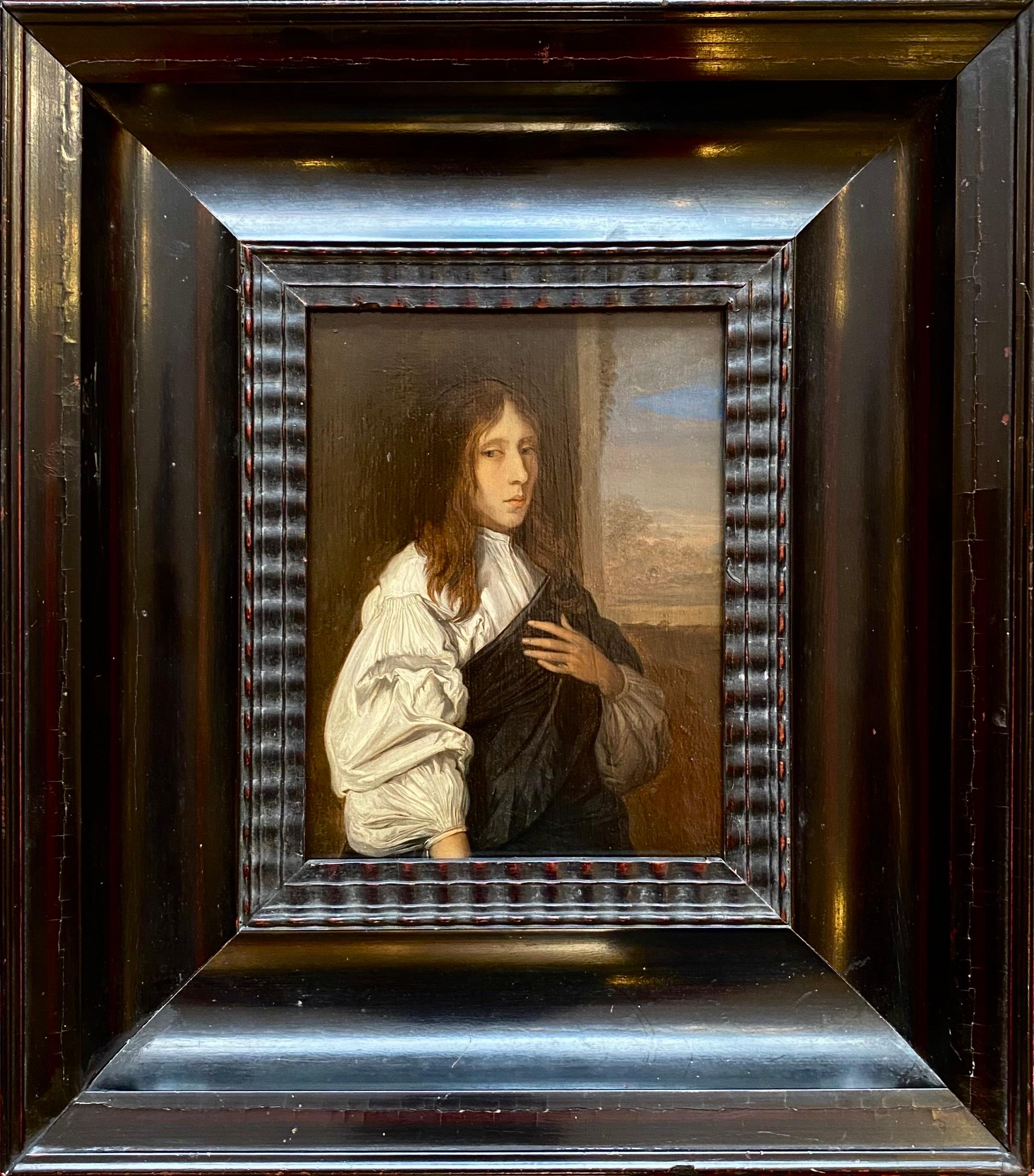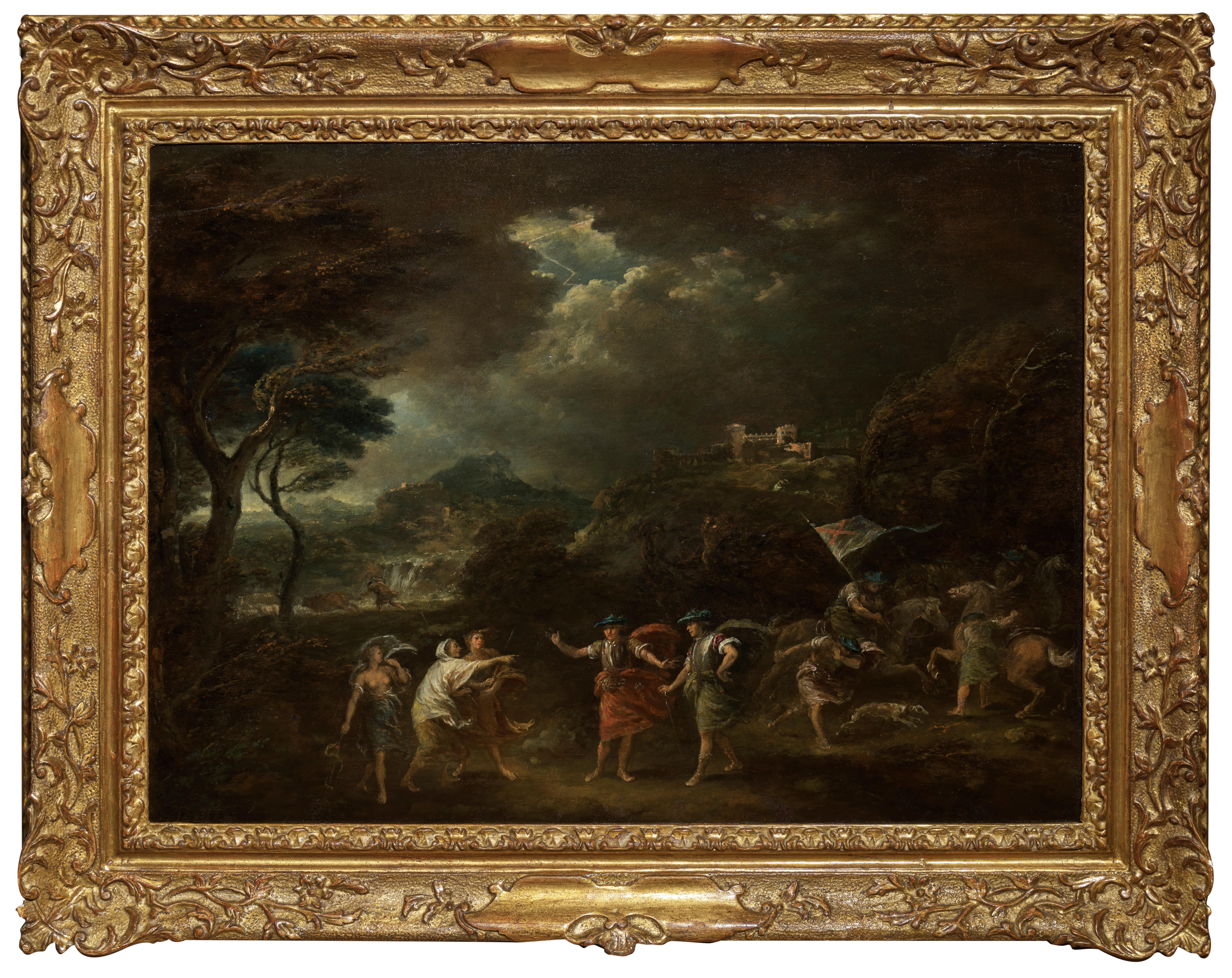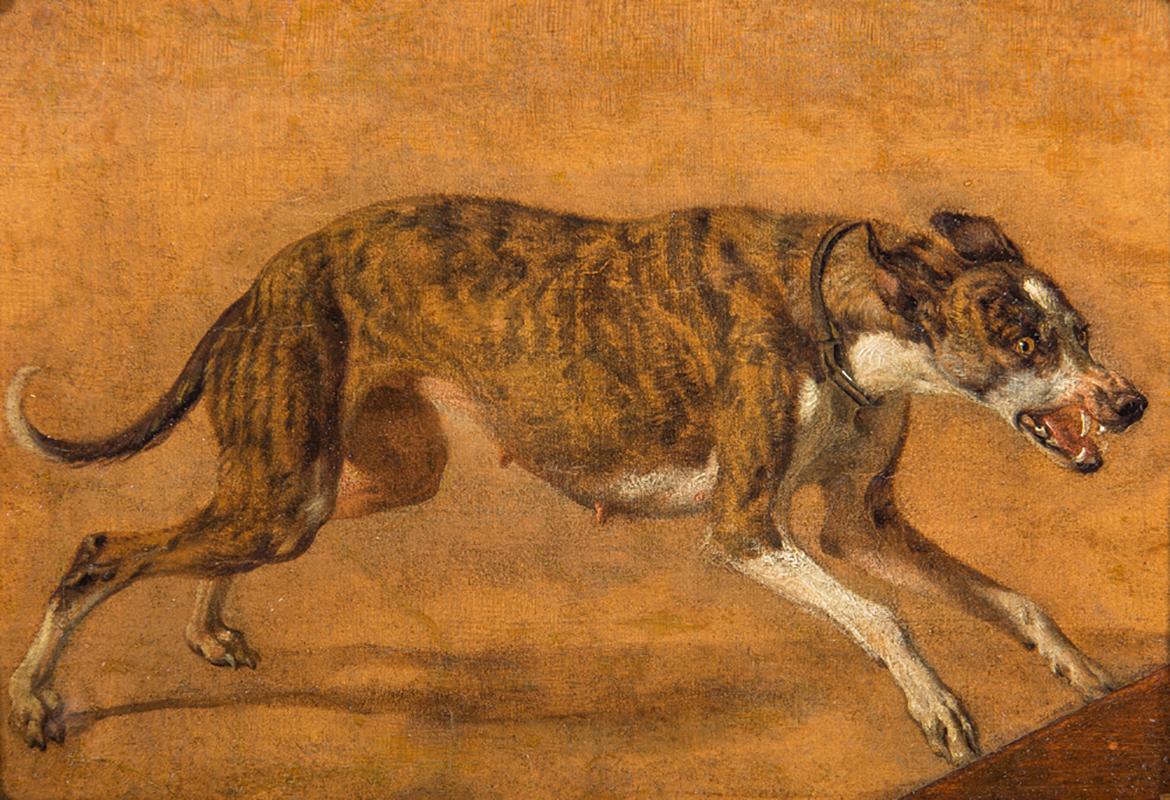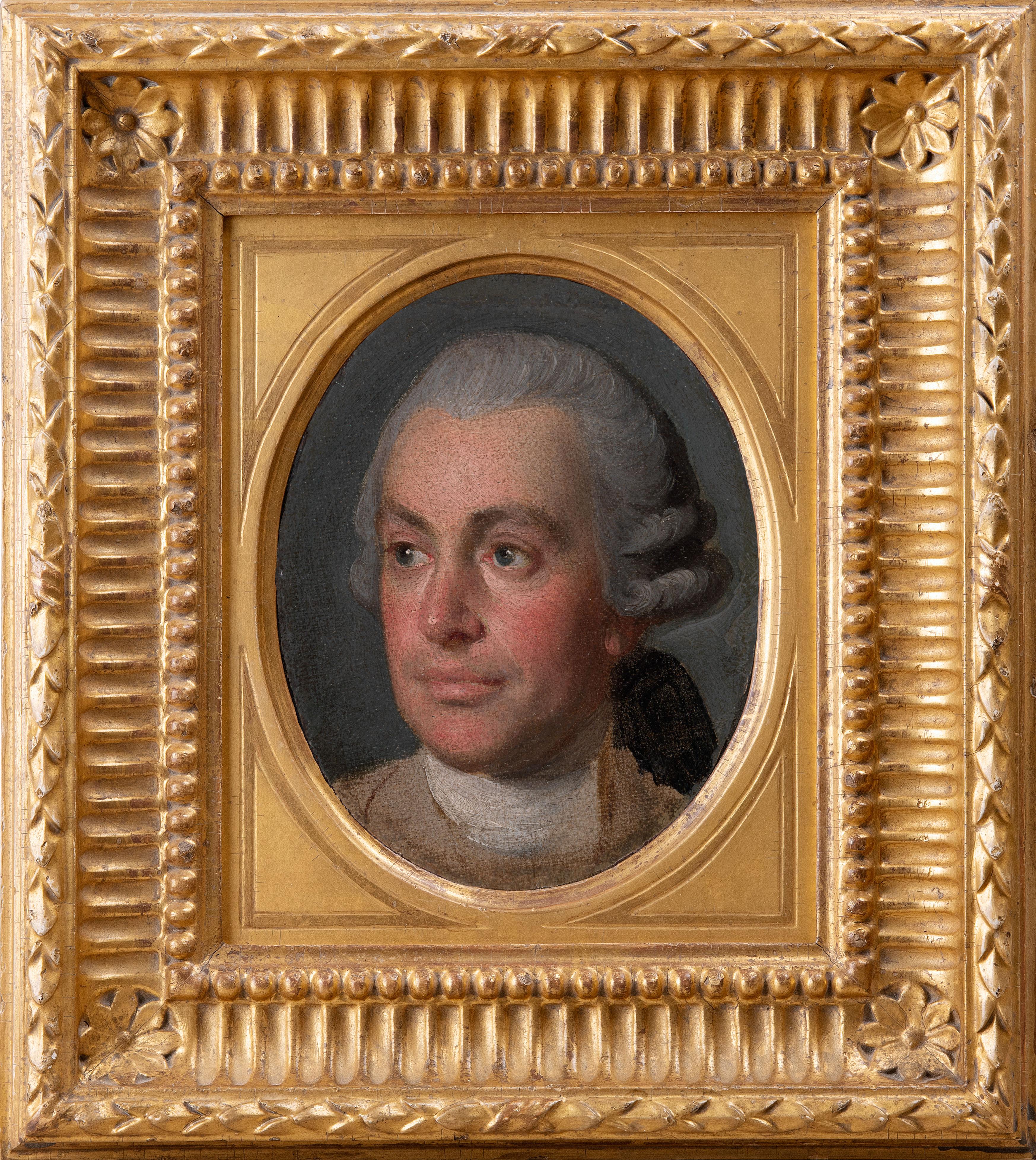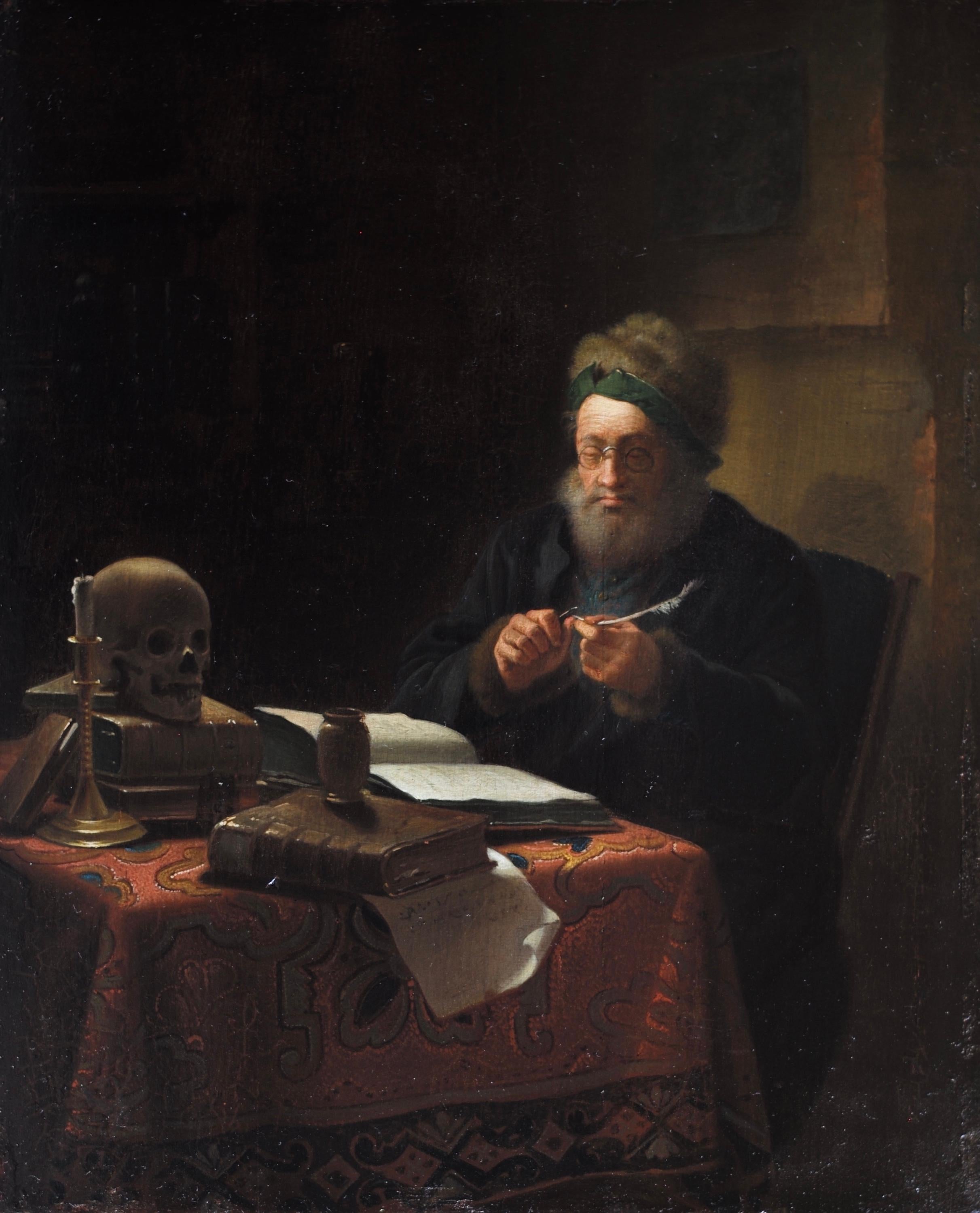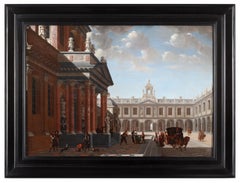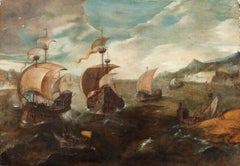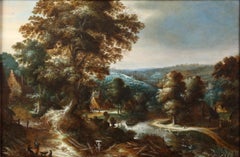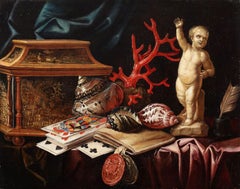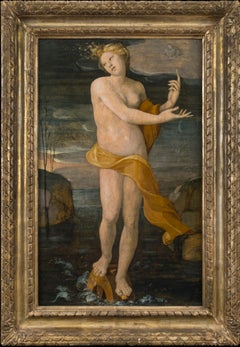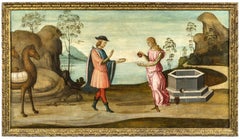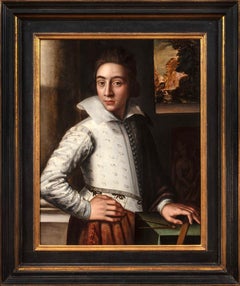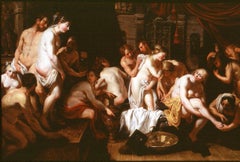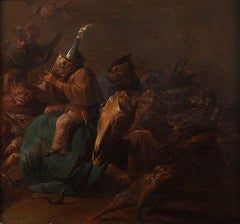
The Temptation of Saint Anthony
View Similar Items
Want more images or videos?
Request additional images or videos from the seller
1 of 3
Cornelis SaftlevenThe Temptation of Saint Anthony
About the Item
- Creator:Cornelis Saftleven (1607 - 1681, Dutch)
- Dimensions:Height: 9.85 in (25 cm)Width: 10.24 in (26 cm)
- Medium:
- Movement & Style:
- Period:
- Condition:
- Gallery Location:Gent, BE
- Reference Number:1stDibs: LU2239214415192
About the Seller
No Reviews Yet
Vetted Professional Seller
Every seller passes strict standards for authenticity and reliability
Established in 1999
1stDibs seller since 2022
Authenticity Guarantee
In the unlikely event there’s an issue with an item’s authenticity, contact us within 1 year for a full refund. DetailsMoney-Back Guarantee
If your item is not as described, is damaged in transit, or does not arrive, contact us within 7 days for a full refund. Details24-Hour Cancellation
You have a 24-hour grace period in which to reconsider your purchase, with no questions asked.Vetted Professional Sellers
Our world-class sellers must adhere to strict standards for service and quality, maintaining the integrity of our listings.Price-Match Guarantee
If you find that a seller listed the same item for a lower price elsewhere, we’ll match it.Trusted Global Delivery
Our best-in-class carrier network provides specialized shipping options worldwide, including custom delivery.More From This Seller
View AllA palace court with nobility - Daniël De Blieck (Middelburg c. 1610 - 1673)
Located in Gent, BE
Oil on panel
Signed and dated: "D. Blieck, f. 1661"
Dimensions: 36 x 50 cm, 46 x 61 cm (framed)
Daniël de Blieck was a Dutch Golden Age painter and architect, who specialized in ar...
Category
Mid-17th Century Old Masters Paintings
Materials
Oil, Panel
War ships of the coast by the circle of Pieter Brueghel II
Located in Gent, BE
Oil on panel
The present work is based on studies and paintings of ships and marine landscapes by Pieter Brueghel the Elder, which he created during his time in Italy and later pub...
Category
Early 17th Century Old Masters Landscape Paintings
Materials
Oil, Panel
Animated landscape with a river - Carstiaen de Ceuninck (Kortrijk c. 1560 - 1633
Located in Gent, BE
Animated landscape with a river
Oil on panel
Signature central below
Dimensions: 37 x 66 cm, 55 x 77 cm (framed)
THE ARTWORK
This painting by Kerstiaen de Keuninck presents an expansive imaginary landscape, filled with lush trees, rolling hills, and distant vistas bathed in a theatrical play of light. Dominated by a large central tree, the composition draws the viewer’s eye toward the glowing horizon, which adds depth and a sense of mystery to the scene. The landscape is populated with small figures and buildings, providing scale and inviting the viewer into the serene yet intricate world De Keuninck has created.
De Keuninck’s landscapes are characterized by a dramatic use of light and shadow, lending a sense of atmosphere and grandeur to otherwise pastoral settings. His imaginary landscapes often embody a sense of fantasy and timelessness, and here, the softly illuminated foliage and shadowy recesses create a harmonious interplay of light, capturing the viewer's attention and enhancing the painting’s depth.
THE ARTIST
Kerstiaen de Keuninck was a Flemish Mannerist painter born around 1560 in Kortrijk and later active in Antwerp. He trained at the Antwerp Guild of Saint Luke, where he registered as a pupil in 1577 and became a master a few years later. Unlike many of his contemporaries, De Keuninck did not travel to Italy, a choice that allowed him to develop a unique style influenced heavily by Flemish landscape traditions rather than Italian influences.
He drew significant inspiration from Roelant Savery, Joos de Momper...
Category
Early 17th Century Old Masters Landscape Paintings
Materials
Oil, Panel
Still life with playing cards, coral and shells - Carstian Luyckx (1623-1658)
Located in Gent, BE
Still life with playing cards, coral, shells, a jewelry box and a stone sculpture
Oil on canvas
We'd like to thank dr. Fred Meijer for his attribution.
...
Category
17th Century Old Masters Still-life Paintings
Materials
Oil
Adoration with angels and putti - Attr. to Johann König (1586-1642)
Located in Gent, BE
Oil on copper
Comes with a certificate by dr. Jan De Maere 20/01/2023)
Dimensions: 26 x 20 cm, 36 x 30 cm (framed)
Johann König was a German painter and follower of Adam Elsheime...
Category
17th Century Old Masters Paintings
Materials
Oil
A view of a street in San Remo - Jacques Carabain (1834 - 1933)
Located in Gent, BE
Oil on canvas
Signed and dated lower right: "J. Carabin, 1886"
Also with a label on the back.
In Jacques Carabain's painting, the Concattedrale di San Siro emerges as a timeless beacon amidst the historic tapestry of San Remo's Via Palma van La Pigna. The canvas unveils a captivating vista, capturing the architectural grandeur of the cathedral framed...
Category
Mid-19th Century Romantic Landscape Paintings
Materials
Canvas, Oil
You May Also Like
Allegory of Fortune
Located in New York, NY
Provenance:
S. Spinelli Collection, Florence; their sale, Galleria Pesaro, Milan, July 11-14, 1928, lot 112 (unsold); reoffered Galleria Luigi Bellini, Florence, April 23-26, 1934, lot 132, as manner of Baldassare Peruzzi
Dr. Giacomo Ancona, Florence, 1930s, and after 1939, San Francisco; thence by descent to his son:
Mario Ancona, San Francisco; thence by descent to his children:
Mario Ancona III and Victoria Ancona, San Francisco, until 1995; thence to:
Phyllis Ancona Green, widow of Mario Ancona, Los Angeles (1995-2012)
Literature:
Donato Sanminiatelli, Domenico Beccafumi. Milan 1967, p. 170 (under paintings attributed to Beccafumi)
Among the precious survivors of Renaissance secular paintings for domestic interiors are several unusual and particularly attractive panels painted in Siena at the end of the fifteenth and beginning of the sixteenth centuries. These paintings depict exemplary figures from antiquity—heroes or heroines, as well as allegorical, literary, and mythological figures. For the most part, these panels have survived in groups of three, although it is possible that some of these works were painted either as part of larger series or as individual projects. One such trio by Beccafumi consists of two paintings now at the National Gallery, London (Marcia and Tanaquil) and a third in the Galleria Doria-Pamphilj, Rome (Cornelia). These were commissioned around 1517–1519 for the bedroom of Francesco di Camillo Petrucci in Siena and were most likely placed together as elements in the wall decoration (spalliere) or installed above the back of a bench or cassapanca. Another, earlier (ca. 1495–1500), set of three—Guidoccio Cozzarelli’s Hippo, Camilla, and Lucretia (Private Collection, Siena) survives with its original wooden framework—a kind of secular triptych. Judith, Sophonisba, and Cleopatra in the collection of the Monte dei Paschi, Siena, are by an anonymous artist close to Beccafumi called the “Master of the Chigi-Saracini Heroines.” Girolamo di Benvenuto’s Cleopatra, Tuccia, and Portia are dispersed (homeless, Prague, Chambery), and Brescianino’s Faith, Hope, and Charity are in the Pinacoteca Nazionale in Siena.
The present painting first appeared in the Spinelli sale in Florence in 1934, at which time it was sold with two panels of identical size and format. Each was catalogued as being by the “manner of Baldassare Peruzzi” and of unidentified subject. Of these, the painting depicting a male figure turned to the right has recently reappeared in a private Italian collection, while the location of the third work, portraying a cloaked figure turned three-quarters left, remains unknown. Our panel depicts the allegorical figure of Fortune. Here she is represented in typical fashion as a nude female figure balanced on a wheel (sometimes called the Rota Fortunae), her billowing drapery indicating that she is as changeable as the wind. The appearance of the Virgin and Child in the cloud at the upper right is an unusual addition to the iconography. The subjects of the two pendant male...
Category
16th Century Old Masters Paintings
Materials
Oil, Panel
Rebecca at the Well
Located in New York, NY
Provenance:
Dr. James Henry Lancashire, Manchester-by-the-Sea, Massachusetts, by 1925; probably by descent to:
Private Collection, Cumberland Foreside, Maine, until 2018
This unpublished panel is a characteristic work of the Master of the Apollo and Daphne Legend, an anonymous Florentine painter in the circle of Bartolommeo di Giovanni, Domenico Ghirlandaio, and Sandro Botticelli. The artistic personality of the Master of the Apollo and Daphne Legend was independently recognized by Everett Fahy and Federico Zeri at roughly the same moment in time. Fahy originally dubbed this artist the Master of the Ryerson Panels but later adopted Zeri’s name for the artist, which derives from his eponymous works from the Samuel H. Kress collection (Figs. 1-2). Fahy posited that the artist was most likely a pupil of Ghirlandaio active from roughly 1480 to 1510, and that he may be identifiable with one of Ghirlandaio’s documented pupils to whom no works have been securely attributed, such as Niccolò Cieco, Jacopo dell’Indaco, or Baldino Baldinetti. The present painting was first attributed to this master by Everett Fahy in 1989, who became aware of its existence only after publishing his definitive studies on the artist.
The surviving body of work by the Master of the Apollo and Daphne Legend is largely composed of series of panels treating the same theme. In addition to the works illustrating the legend of Apollo and Daphne, there are also series on the themes of Susanna and the Elders and the story of Saint Joseph, among others. The subject of the present panel is drawn from Genesis 24, the story of Isaac. It is possible that our painting relates to another work by the artist depicting the Sacrifice of Isaac formerly in the collection of E. A. McGuire in Dublin, Ireland (Fig. 3), and that these two panels were originally part of a decorative scheme based on the story of Isaac.
Although the Master’s paintings of this type have traditionally been considered painted fronts of wedding chests, known as cassoni, the scale of these paintings and the fact that they are often part of a series indicates that they are more likely spalliera panels—paintings set into furniture or the wainscoting of a room. The biblical episode depicted in this painting centers on the theme of marriage, which suggests that this work was likely commissioned for the domestic interior of a newly married couple. The Master has transcribed into paint even the minute details of this Old Testament story, in which Abraham sends a servant to travel by camel to the land of his father and seek out a wife for his son Isaac. The servant is here shown at the well...
Category
15th Century and Earlier Old Masters Figurative Paintings
Materials
Oil, Tempera, Wood Panel
Portrait of an Artist (possibly a Self-Portrait)
Located in New York, NY
Provenance:
Bradley Collection.
Private Collection, Upperville, Virginia.
Literature:
Katlijne van der Stighelen and Hans Vlieghe, Rubens: Portraits of Unidentified and Newly Identified Sitters painted in Antwerp, Corpus Rubenianum Ludwig Burchard, vol. 19, pt. 3, London and Turnhout, 2021, under cat. no. 189, p. 161, and fig. 75.
This painting had previously been considered to be by an anonymous Tuscan painter of the sixteenth century in the orbit of Agnolo Bronzino. While the painting does in fact demonstrate a striking formal and compositional similarity to Bronzino’s portraits—compare the nearly identical pose of Bronzino’s Portrait of a Young Man in the Metropolitan Museum of Art (Fig. 1)—its style is completely foreign to Italian works of the period. That it is painted on an oak panel is further indication of its non-Italian origin.
This portrait can in fact be confidently attributed to the Antwerp artist Huybrecht Beuckelaer. Huybrecht, the brother of Joachim Beuckelaer, has only recently been identified as the author of a distinct body of work formerly grouped under the name of the “Monogrammist HB.” In recent studies by Kreidl, Wolters, and Bruyn his remarkable career has been delineated: from its beginnings with Joachim in the workshop of Pieter Aertsen; to his evident travels to Italy where, it has been suggested, he came into contact with Bronzino’s paintings; to his return to Antwerp, where he seems to have assisted Anthonis Mor in painting costume in portraits; to his independent work in Antwerp (where he entered the Guild of Saint Luke in 1579); and, later to his career in England where, known as “Master Hubberd,” he was patronized by the Earl of Leicester. Our painting was recently published by Dr. Katlijne van der Stighelen and Dr. Hans Vlieghe in a volume of the Corpus Rubenianum, in which they write that the painting “has a very Italian air about it and fits convincingly within [Beuckelaer’s] oeuvre.” Stighelen and Vlieghe compare the painting with Peter Paul Ruben’s early Portrait of a Man, Possibly an Architect or Geographer in the Metropolitan Museum of Art, in which the sitter holds a compass and wears a similarly styled doublet (Fig. 2).
Huybrecht both outlived and travelled further afield than his brother Joachim, who made his career primarily in Antwerp. Whereas Joachim was the main artistic inheritor of their uncle and teacher, Pieter Aertson, working in similar style and format as a specialist in large-scale genre and still-life paintings, Huybrecht clearly specialized as a painter of portraits and was greatly influenced by the foreign artists and works he encountered on his travels. His peripatetic life and his distinctly individual hand undoubtedly contributed to the fact his career and artistic output have only recently been rediscovered and reconstructed. His periods abroad seem to have overlapped with the mature phase of his brother Joachim’s career, who enrolled in the Antwerp Guild of Saint Luke much earlier than his brother, establishing himself as an independent painter in 1560. Joachim’s activity was confined to the following decade and half, and his latest work dates from the last year of his life, 1574. Our portrait was likely produced in the late 1560s, a dating supported by the dendrochronological investigation performed by Dr. Peter Klein, which established that it is painted on an oak panel with an earliest felling date of 1558 and with a fabrication date of ca. 1566.
This painting presents a portrait of an artist, almost certainly Huybrecht’s self-portrait. The young sitter is confidently posed in a striking patterned white doublet with a wide collar and an abundance of buttons. He stands with his right arm akimbo, his exaggerated hands both a trademark of Huybrecht and his brother Joachim’s art, as well as a possible reference to the “hand of the artist.” The figure peers out of the painting, interacting intimately and directly with the viewer, as we witness him posed in an interior, the tools and results of his craft visible nearby. He holds a square or ruler in his left hand, while a drawing compass...
Category
16th Century Old Masters Paintings
Materials
Oil, Panel
Esther in the Women's House of Ahasuerus
By Artus Wolfort
Located in New York, NY
Born in Antwerp, Artus Wolffordt received his training in Dordrecht where he became a master in 1603 at the age of twenty-two. He returned to his native city in 1615 and initially worked as an assistant to Otto van Veen...
Category
17th Century Old Masters Paintings
Materials
Oil, Panel
Portrait of a Man
Located in New York, NY
Provenance:
with Leo Blumenreich and Julius Böhler, Munich, 1924
Dr. Frederic Goldstein Oppenheimer (1881-1963), San Antonio, Texas; by whom given to:
Abraham M. Adler, New York, until 1985; thence by descent to the present owners
While old inscriptions on the verso of this panel propose its author to be Hans Holbein and the sitter Sir John More—a lawyer, judge, and the father of Sir Thomas More—this fine portrait has long been recognized to be by a Flemish hand. Max Friedländer gave the painting to Bernard van Orley (1487/1491 – 1541) in 1924, but did not include it in the volume dedicated to the artist in his Early Netherlandish Paintings...
Category
16th Century Old Masters Portrait Paintings
Materials
Oil, Panel
$52,500
17th Century by Giovanni Stefano Danedi Madonna and Child Crowned by Angels
Located in Milano, Lombardia
Giovanni Stefano Danedi, called Montalto (Treviglio, Italy, 1612 - Milan, Italy, 1690)
Title: Madonna and Child crowned by angels
Medium: Oil on panel
Dimensions: without frame 58 x ...
Category
17th Century Old Masters Portrait Paintings
Materials
Oil, Panel
Recently Viewed
View AllMore Ways To Browse
Mountain Impressionist Landscape
Oil Art 1922
Antwerp Art
Pennsylvania Landscape Painting
Portrait Of King
Palace De
River View Painting
Southwest Contemporary
Oil Paintings Happy
Old French Portraits
19th Century French Portraits
Desert Landscape Paintings
Oil Country Scene
Plains Landscape
Large Italian Landscape Painting
Church Architecture
Impressionist Boat
James Brown Artist
